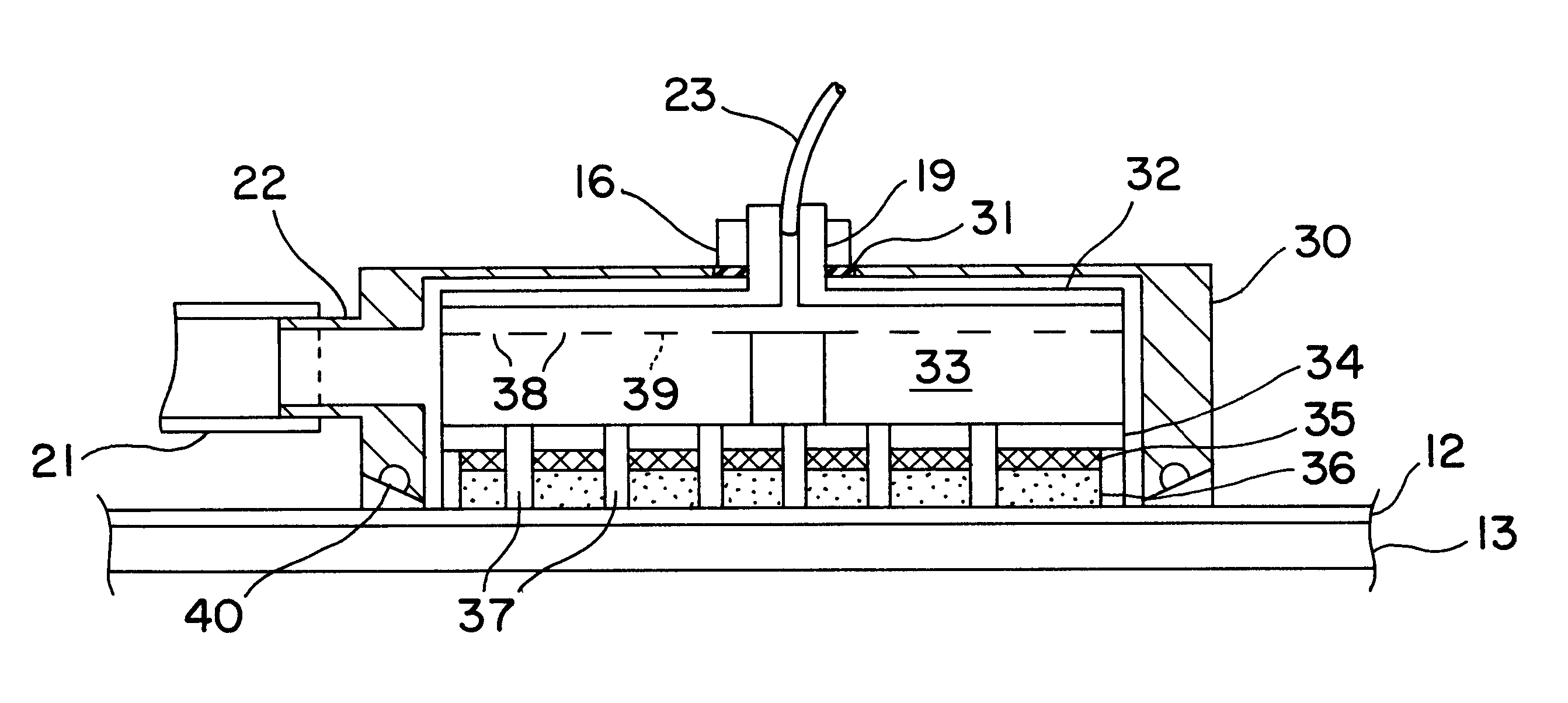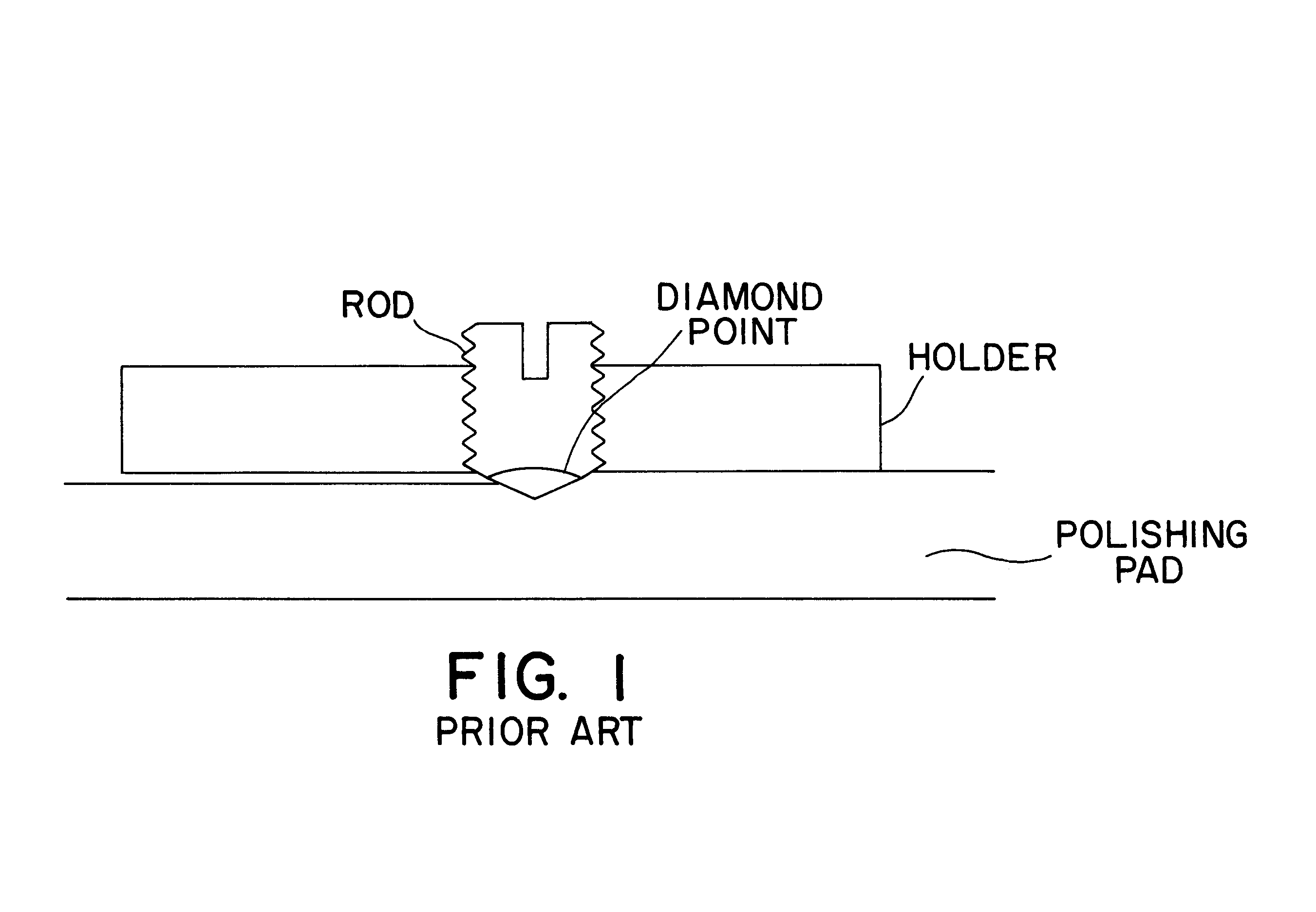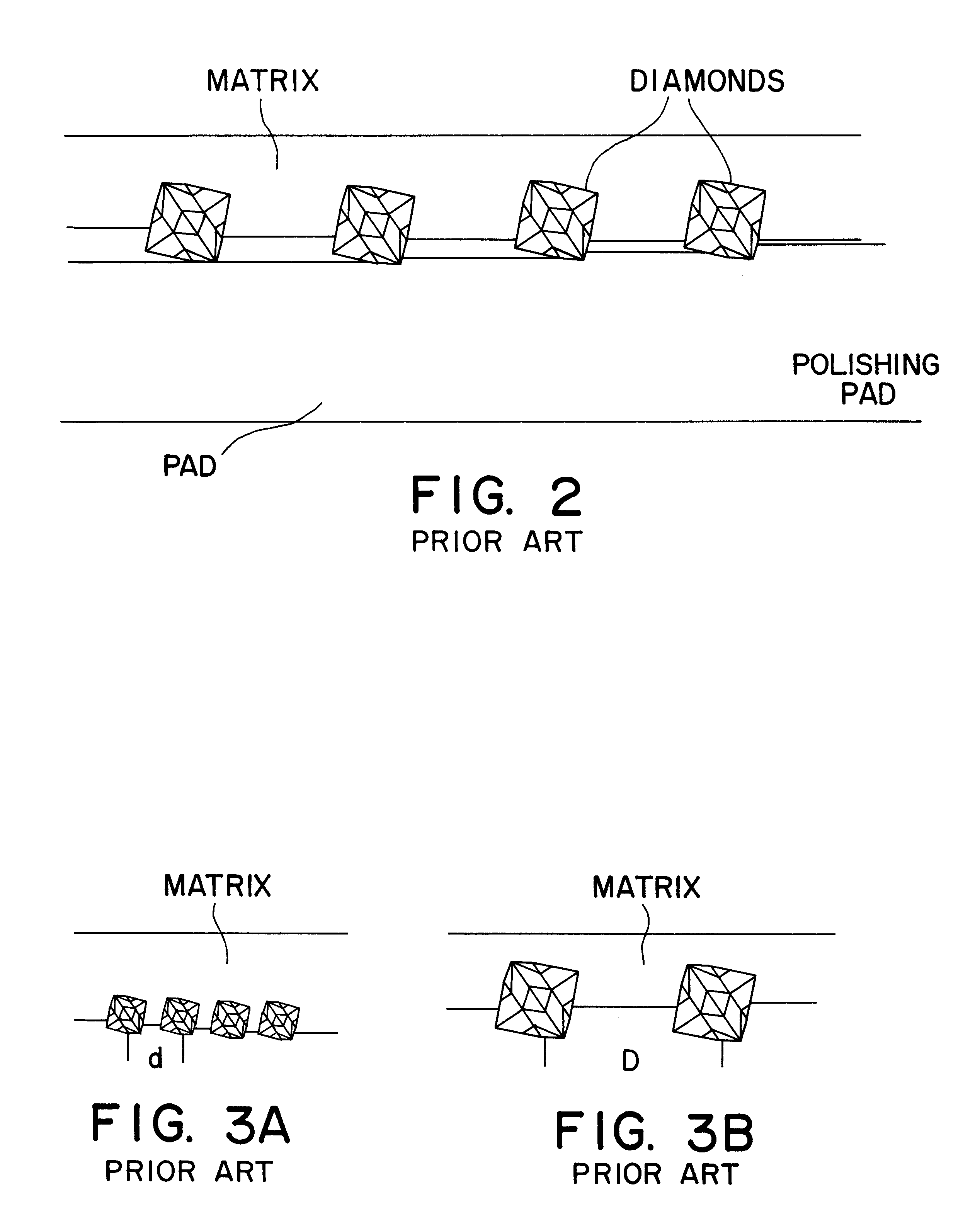Polishing pad conditioning system
a conditioning system and polishing pad technology, applied in the direction of abrasive surface conditioning devices, manufacturing tools, lapping machines, etc., can solve the problems of reducing the removal or polishing rate and repeatability, affecting the device performance, and not always removing waste from the flushing process
- Summary
- Abstract
- Description
- Claims
- Application Information
AI Technical Summary
Problems solved by technology
Method used
Image
Examples
Embodiment Construction
The present invention is an improved apparatus and method for conditioning polishing pads such as those used in Chemical Mechanical Polishing or Planarizing (CMP) Systems for removing irregularities on semiconductor wafer substrates. The specific details of the preferred embodiment provide a thorough understanding of the invention, however, some CMP system elements which operate in conjunction with the present invention have not been elaborated on because they are well known and may tend to obscure other aspects that are unique to this invention. It will be obvious to one skilled in the art that the present invention may be practiced without these other system elements.
Referring to FIG. 4, a perspective view of a typical CMP system 10 is illustrated generally comprising a polishing head (not shown) that applies pressure to wafer 11 against a polishing pad 12 through a wafer carrier and support arm (not shown), and a polishing pad conditioning apparatus 15. Wafer 11 is rotated on pol...
PUM
| Property | Measurement | Unit |
|---|---|---|
| thickness | aaaaa | aaaaa |
| diameter | aaaaa | aaaaa |
| diameter | aaaaa | aaaaa |
Abstract
Description
Claims
Application Information
 Login to View More
Login to View More - R&D
- Intellectual Property
- Life Sciences
- Materials
- Tech Scout
- Unparalleled Data Quality
- Higher Quality Content
- 60% Fewer Hallucinations
Browse by: Latest US Patents, China's latest patents, Technical Efficacy Thesaurus, Application Domain, Technology Topic, Popular Technical Reports.
© 2025 PatSnap. All rights reserved.Legal|Privacy policy|Modern Slavery Act Transparency Statement|Sitemap|About US| Contact US: help@patsnap.com



